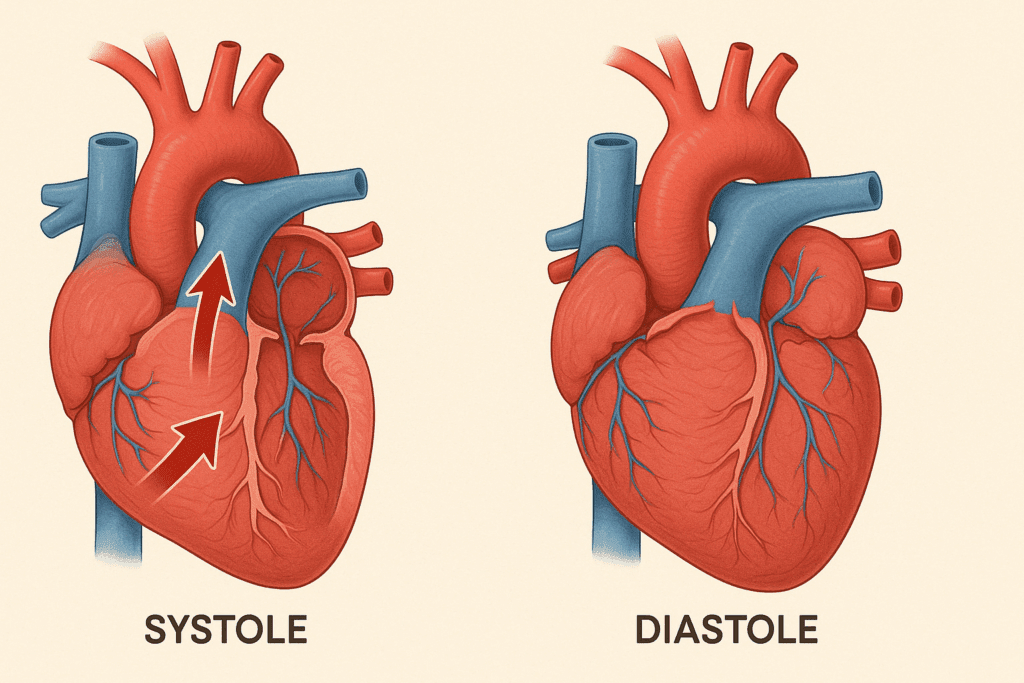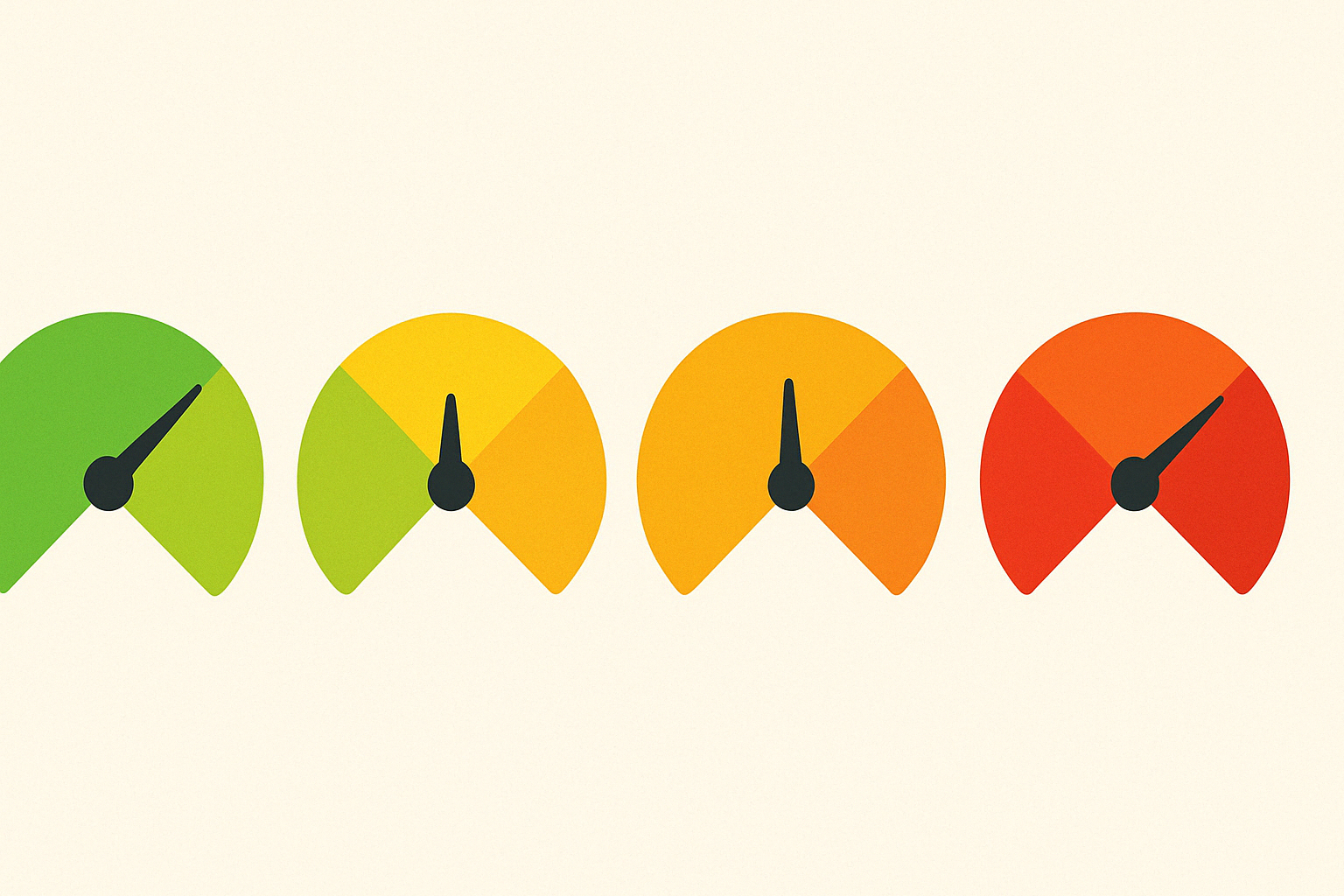Blood pressure is one of the most commonly measured health metrics, yet it remains one of the most misunderstood. Many people can recite their blood pressure numbers but remain unclear about what they truly mean, particularly the bottom number in a blood pressure reading. Understanding these numbers is essential for identifying cardiovascular risk factors early and making informed decisions about long-term health. Among the wide range of readings that patients encounter, questions like “what does a BP bottom number of 122 mean” are increasingly common and merit a closer look. This article offers a deep dive into how to interpret blood pressure readings, what constitutes a normal versus elevated diastolic value, and what actions you can take to protect your heart health.
You may also like: Sudden Spikes in Blood Pressure: What Can Cause a Sudden Increase and When to Seek Medical Attention

The Basics of Blood Pressure: Systolic and Diastolic Demystified
To fully grasp what a reading such as “what does a BP bottom number of 122 mean” implies, one must first understand the basic structure of a blood pressure measurement. Blood pressure is expressed as two numbers, typically written in the form of systolic over diastolic. For example, in a reading of 126 over 84 blood pressure, 126 represents the systolic pressure while 84 represents the diastolic pressure.
The systolic number—the top number—measures the pressure in your arteries when your heart beats. It reflects how much force your blood exerts against your arterial walls during contraction. For many patients, the question “is systolic the top number” is the starting point for understanding these vital metrics. The answer is yes, and it plays a crucial role in evaluating cardiovascular health. However, it is the diastolic value, the bottom number, that often stirs more confusion and concern.
Diastolic pressure measures the pressure in your arteries when your heart rests between beats. Elevated diastolic readings—such as a diastolic of 122—may signal a heightened risk of cardiovascular events, particularly if they are persistent. So, what does a BP bottom number of 122 mean in practical terms? It suggests that the arteries are under significant pressure even when the heart is not actively pumping, which may be indicative of underlying vascular resistance or stiffness.

Why Diastolic Pressure Matters More Than You Think
Many people assume that the systolic number is the more important figure in a blood pressure reading, but emerging research has begun to highlight the equally critical role of diastolic pressure. When clinicians are asked questions such as “what does diastolic of 122 mean,” they often point to the risk of sustained vascular tension, which may increase the likelihood of heart attacks, strokes, and kidney damage.
A BP reading like 134 over 84 blood pressure, for example, can be considered borderline high, especially if the diastolic number remains above 80 on multiple occasions. The significance of the bottom number becomes even more apparent when readings such as 126 over 84 blood pressure or 127 86 blood pressure are recorded repeatedly. In these scenarios, the elevated diastolic pressure may indicate chronic vascular strain.
The heart requires periods of rest between beats to refill with blood and oxygen. If the arteries remain constricted during these periods, the heart must work harder to maintain adequate circulation. Over time, this added strain can contribute to the development of left ventricular hypertrophy, a condition in which the heart muscle thickens and becomes less efficient. Understanding what a BP bottom number of 122 means is crucial because it signals a state of constant arterial tension that could predispose someone to these structural changes.

Interpreting Specific Blood Pressure Readings: Context is Key
Blood pressure is highly variable and influenced by multiple factors including stress, physical activity, diet, and medications. Therefore, a single reading is often insufficient to diagnose hypertension or hypotension. Nonetheless, repeated occurrences of certain blood pressure values warrant attention.
Take, for example, the reading 104 68 blood pressure. This would generally be considered within the normal range, assuming no symptoms of hypotension such as dizziness or fatigue. Likewise, a 112 70 blood pressure reading falls comfortably within the normal spectrum for most adults. These values indicate that both systolic and diastolic pressures are well-managed, reflecting healthy vascular function.
In contrast, readings like 124 72 pulse 104 may raise some concerns, not necessarily due to the blood pressure numbers themselves, which are fairly typical, but because of the elevated pulse rate. A heart rate of 104 beats per minute may suggest anxiety, fever, dehydration, or another underlying condition that should be evaluated further.
More ambiguous are readings such as 128 84 blood pressure or 108 70 blood pressure, which may still fall within the normal or slightly elevated ranges but should be contextualized based on age, medical history, and concurrent symptoms. Readings like 134 over 84 blood pressure and 126 82 blood pressure push closer to the threshold for Stage 1 hypertension and might prompt your healthcare provider to recommend lifestyle changes or even medication.

When High Diastolic Pressure Signals an Urgent Problem
Repeated high diastolic readings are not to be taken lightly. The question “how high is 142 92 blood pressure” should be interpreted as a red flag, especially if confirmed over multiple readings. In this scenario, the systolic pressure exceeds 140 mmHg while the diastolic pressure is over 90 mmHg, qualifying it as Stage 2 hypertension. This level of elevation poses a significant risk for cardiovascular events, particularly stroke and heart failure.
Similarly, readings such as 126 over 84 blood pressure and 121 81 blood pressure may not meet the clinical criteria for hypertension, but they fall within the “elevated” category according to current American Heart Association guidelines. Repeated measurements in this range should not be dismissed, especially in individuals with additional risk factors such as diabetes, obesity, or a family history of cardiovascular disease.
Subtler variations, such as 127 86 blood pressure or 125 82 blood pressure, may still indicate elevated diastolic pressure that could lead to complications over time. In these cases, addressing modifiable risk factors becomes crucial. Lifestyle adjustments such as reducing sodium intake, increasing physical activity, managing stress, and limiting alcohol consumption can make a significant impact.

The Meaning Behind “What Does a BP Bottom Number of 122 Mean”
When patients encounter a reading like 126 over 86 blood pressure or ask “what does a BP bottom number of 122 mean,” they are often searching for reassurance or guidance. A diastolic value of 122 mmHg is a serious concern and typically constitutes a hypertensive crisis, especially if accompanied by symptoms such as chest pain, shortness of breath, or vision changes. Such readings warrant immediate medical attention.
Understanding the dangers associated with such elevated readings is essential for early intervention. A persistent diastolic pressure of this magnitude suggests that the arteries are not relaxing adequately between heartbeats. Over time, this may compromise organ function and increase the likelihood of cardiovascular events.
It is also worth considering the significance of readings like 127 77 blood pressure or 127 83 blood pressure. While not as severe as a 122 mmHg diastolic value, these numbers may still suggest early-stage hypertension and should prompt a deeper investigation into cardiovascular health. Maintaining a log of daily readings can help both patients and providers detect patterns that might otherwise go unnoticed.

Lifestyle and Environmental Factors That Influence Blood Pressure
Blood pressure is influenced by a complex interplay of genetics, lifestyle choices, and environmental factors. For individuals with readings like 126 76 blood pressure or 127 90 blood pressure, daily habits can either mitigate or exacerbate the risk of long-term health issues. Nutritional choices, particularly high sodium and low potassium intake, are among the leading contributors to elevated blood pressure.
Regular physical activity, particularly aerobic exercise, has been shown to significantly lower both systolic and diastolic pressure. For individuals with readings in the borderline range—such as 109 over 70 blood pressure or 102 over 68 blood pressure—maintaining a consistent exercise regimen can help preserve these healthy levels over the long term.
Chronic stress is another major factor that can elevate blood pressure. High-pressure work environments, poor sleep quality, and unresolved emotional trauma may all contribute to readings such as 126 83 blood pressure or 134 74 blood pressure. Learning stress-reduction techniques like meditation, deep breathing, and time management can be transformative in controlling blood pressure levels.

Understanding Fluctuations and When to Seek Help
Daily fluctuations in blood pressure are normal and can be influenced by time of day, body position, hydration status, and recent food intake. However, persistent elevations—especially of the diastolic number—are cause for concern. Readings like sys 126 dia 77 may appear benign at first glance, but if consistently observed, they suggest a pattern that needs further exploration.
The same applies to readings such as 126 over 86 bp or 127 82 blood pressure. While these are not classified as hypertensive crises, they still fall within a range that may require medical management. Monitoring blood pressure at home using validated devices, maintaining a record of readings, and sharing this information with a healthcare provider can aid in early diagnosis and effective treatment planning.
Frequently Asked Questions: Diastolic Blood Pressure and Cardiovascular Health
1. Why is it concerning if my bottom blood pressure number stays above 80, like in a 126 over 84 blood pressure reading?
While a reading like 126 over 84 blood pressure may not seem immediately alarming, having a diastolic pressure above 80 consistently could suggest the early stages of vascular stiffness or underlying resistance in the arterial system. This might not trigger symptoms right away, but over time, elevated diastolic values may contribute to the gradual wear and tear on your heart muscle and vessels. Unlike systolic pressure, which fluctuates more frequently, diastolic pressure is more stable and thus a more subtle indicator of chronic cardiovascular stress. A persistent elevation—like what’s seen in 126 82 blood pressure or 128 84 blood pressure—should prompt proactive monitoring and discussions with a healthcare provider about diet, lifestyle, and potential medication needs. It’s a signal, not just a number.
2. Is a 104 68 blood pressure reading always healthy, or can it sometimes be problematic?
On the surface, a 104 68 blood pressure reading is considered well within the normal range, and for many individuals—especially younger or athletic people—it’s a sign of strong cardiovascular fitness. However, for others, particularly those who experience fatigue, dizziness, or fainting spells, this lower-end reading could be symptomatic of hypotension. It’s crucial to correlate numbers like bp 104 68 with your overall health picture. For example, someone with chronic dehydration or autonomic dysfunction may require further assessment. Ultimately, 104 68 blood pressure is not one-size-fits-all and must be interpreted in context.
3. What does the bottom number of BP mean in relation to exercise and heart recovery?
When asking, “what does the bottom number of BP mean” in a fitness context, it’s important to consider how your body manages recovery after physical exertion. A healthy cardiovascular system should demonstrate a gradual decrease in both systolic and diastolic pressures following a workout. If the diastolic number remains elevated post-exercise—as could be seen in a 124 72 pulse 104 reading—it might suggest delayed vascular relaxation or underlying tension in the autonomic nervous system. This doesn’t necessarily indicate disease but may highlight the need for improved cardiovascular conditioning or better hydration strategies. Monitoring post-exercise blood pressure trends can offer valuable insights into recovery health.
4. Should I be concerned if my readings fluctuate between 127 86 blood pressure and 126 86 BP on different days?
Fluctuations between readings like 127 86 blood pressure and 126 86 BP are quite common, particularly when measured at different times of day or under varying stress levels. These numbers hover near the threshold of Stage 1 hypertension, meaning they shouldn’t be ignored. However, occasional shifts within this range do not necessarily indicate a problem unless a consistent upward trend develops. Environmental factors such as sodium intake, caffeine, and sleep patterns can all play a role. Establishing a routine for measurement, including time of day and body position, can help better assess whether these variations are clinically significant.
5. What does 121 over 78 blood pressure mean, especially when I feel completely fine?
At first glance, you might wonder, “what does 121 over 78 blood pressure mean if I feel healthy and symptom-free?” The answer is largely positive—this reading falls well within the optimal range according to most clinical guidelines. However, it’s also an opportunity to maintain and reinforce healthy habits. Many individuals wait until numbers like 134 over 84 blood pressure appear before making changes, but it’s wise to act preemptively. A reading like 121 81 blood pressure can be a great baseline to track how stress, diet, and activity affect your cardiovascular function over time. Keeping readings below 130/80 as a long-term goal significantly reduces stroke and heart attack risk.
6. Can a reading like 112 70 blood pressure suggest different things based on age or medication?
Yes, a 112 70 blood pressure reading can be perfectly normal—or potentially indicative of a medication side effect—depending on your age and clinical context. For instance, in younger adults, especially athletes, 112 70 blood pressure may reflect high vascular efficiency and parasympathetic nervous system dominance. However, in older adults or those on blood pressure medications, this reading might need to be monitored for signs of excessive lowering, such as dizziness or reduced kidney perfusion. Evaluating associated symptoms alongside readings is key. Medications like beta-blockers can lower both pulse and pressure, so pair this number with how you’re feeling.
7. How high is 142 92 blood pressure, and what might trigger such a spike suddenly?
Understanding how high is 142 92 blood pressure involves recognizing that it meets the criteria for Stage 2 hypertension, which increases the risk for stroke and heart failure if sustained. Acute spikes like this can be triggered by several factors, including emotional stress, pain, sleep apnea, or missing a dose of antihypertensive medication. Even a high-sodium meal or dehydration can cause such a sudden jump. If a reading like 142 92 occurs without accompanying symptoms, it may not be immediately dangerous but should be followed closely. Chronic elevation at this level typically requires medical intervention.
8. What does diastolic of 122 mean when the top number isn’t equally high?
A diastolic reading of 122 is extremely high, even if the systolic pressure seems less alarming. When patients ask, “what does diastolic of 122 mean” in the absence of a matching high top number, it often points to specific problems such as hormonal imbalances, severe vascular stiffness, or even renal artery issues. The dissociation between systolic and diastolic pressures is uncommon but not unheard of. It may warrant advanced diagnostic testing, including renal function panels or imaging studies to check for vascular anomalies. Regardless of the systolic number, a diastolic of 122 typically requires urgent attention.
9. How should I interpret readings like 126 76 blood pressure or 127 77 blood pressure if I’m otherwise healthy?
Readings like 126 76 blood pressure and 127 77 blood pressure are often seen in people who are just beginning to tip into the “elevated” category. For otherwise healthy individuals, these values provide a helpful warning to make preventive adjustments. This might mean re-evaluating sodium intake, increasing cardiovascular activity, or introducing mindfulness practices to manage stress. Unlike crisis readings such as 127 90 blood pressure, these figures allow for a longer window to intervene naturally before medication becomes necessary. The key is consistency; if these readings persist or inch upward, proactive changes become increasingly urgent.
10. Can a consistently low diastolic, like in a 108 70 blood pressure or 109 over 70 blood pressure reading, be problematic long-term?
While readings like 108 70 blood pressure or 109 over 70 blood pressure are generally not worrisome in younger, active adults, chronically low diastolic pressure in older individuals may raise concerns. Diastolic pressure below 70 mmHg has been linked to increased coronary artery risk in seniors, as it may indicate insufficient perfusion to the heart muscle during rest. For those on antihypertensive medications, this could signify overtreatment. Moreover, a low bottom number might reduce cognitive blood flow over time, increasing the risk for vascular dementia. Regular monitoring and nuanced treatment plans are essential when evaluating persistently low diastolic values.
This FAQ complements and extends the insights from the main article, integrating real-world implications, clinical nuance, and keyword-rich context that reinforces EEAT principles for authoritative health content.
Conclusion: Recognizing the Meaning Behind Diastolic Readings Like a BP Bottom Number of 122
Understanding what a BP bottom number of 122 means is not simply a matter of knowing your numbers—it’s about recognizing what those numbers reveal about your cardiovascular health. Elevated diastolic pressure, particularly in readings like 126 over 84 blood pressure or 134 over 84 blood pressure, can signal ongoing vascular stress that may lead to serious complications if left unaddressed.
By examining specific readings such as 128 84 blood pressure, 126 82 blood pressure, or 121 81 blood pressure, patients can begin to see how even small variations matter when viewed over time. It is especially crucial to take action if numbers trend upward toward levels like 142 92 blood pressure or persistently stay above the 80 mmHg diastolic threshold.
Taking charge of your cardiovascular health means understanding how lifestyle, genetics, and environment interact to shape your blood pressure profile. Readings such as 127 86 blood pressure or 126 86 bp might seem harmless in isolation but can be early warning signs when considered in context.
The key takeaway is this: when you ask, “what does a BP bottom number of 122 mean,” you’re asking an important question about your health trajectory. The answer lies not only in the numbers themselves but in how you respond to them—with informed choices, medical guidance, and proactive care. Whether your reading is 104 68 blood pressure, 112 70 blood pressure, or a concerning 126 over 86 blood pressure, every measurement offers a snapshot of your cardiovascular health. Interpreting those snapshots accurately—and acting on them—can make all the difference in preserving heart health for years to come.
Was this article helpful? Don’t let it stop with you. Share it right now with someone who needs to see it—whether it’s a friend, a colleague, or your whole network. And if staying ahead on this topic matters to you, subscribe to this publication for the most up-to-date information. You’ll get the latest insights delivered straight to you—no searching, no missing out.
Further Reading:
Diastole vs. Systole: Know Your Blood Pressure Numbers
What Does it Mean When the Bottom Number of Your Blood Pressure is Over 100?


